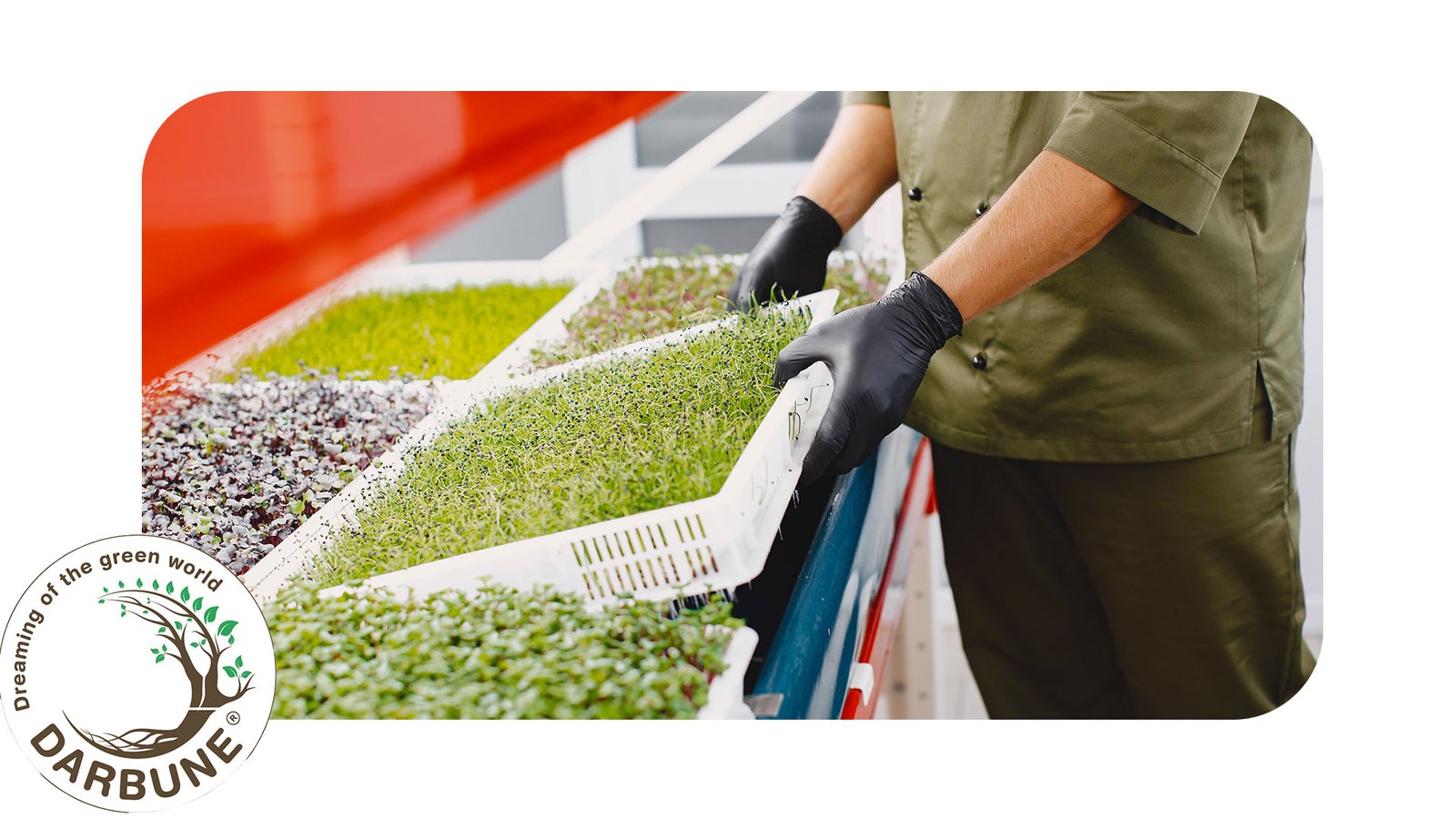Hydroponic farming is revolutionizing the agricultural industry, offering small businesses a sustainable and profitable way to grow fresh produce without soil. With the increasing demand for organic and locally grown food, entrepreneurs are turning to hydroponics as an innovative solution to maximize yield while minimizing resource consumption.
In this article, we will explore the benefits of hydroponic farming for small businesses, the best systems to use, and key steps to start and scale a successful hydroponic farm. Whether you are a startup or an existing business looking to expand into this lucrative market, this guide will provide you with essential insights to succeed.

What is Hydroponic Farming?
Hydroponic farming is a method of growing plants in nutrient-rich water instead of soil. This technique allows farmers to cultivate crops in controlled environments, leading to faster growth, higher yields, and reduced water usage. Some of the most common hydroponic systems include:
- Deep Water Culture (DWC): Plants are suspended in nutrient-rich water, ensuring constant access to nutrients.
- Nutrient Film Technique (NFT): A thin film of nutrient solution flows over plant roots.
- Aeroponics: Plants receive nutrients through misting, allowing for maximum oxygen exposure.
- Ebb and Flow: A flood-and-drain system that provides nutrients at scheduled intervals.
By choosing the right hydroponic system, small businesses can optimize productivity and ensure consistent crop quality. Hydroponic farming is one of the most advanced Types of Indoor Farming, allowing businesses to grow crops efficiently in limited spaces.
Benefits of Hydroponic Farming for Small Businesses
1. Higher Yield and Faster Growth
- Plants receive optimal nutrients directly to their roots, leading to faster growth cycles.
- Hydroponic systems can produce 30-50% more yield compared to traditional farming methods.
2. Space Efficiency
- Hydroponic farms require significantly less space, making them ideal for indoor farming and urban settings.
- Vertical farming setups can maximize production per square foot.
3. Water Conservation
- Hydroponic farming uses up to 90% less water than traditional soil-based agriculture.
- The closed-loop system recycles water, reducing waste and promoting sustainability.
4. Reduced Dependence on Weather
- Climate-controlled environments allow for year-round production.
- No risk of soil degradation, pests, or unpredictable weather conditions.
5. Pesticide-Free and Organic Growth
- Plants grown hydroponically are less susceptible to soil-borne diseases and pests.
- Eliminates the need for harmful pesticides, ensuring healthier crops for consumers.
However, one challenge to be mindful of in indoor farming is the presence of Common Indoor Plant Pests, which can affect plant health. Implementing proper pest control measures is essential to maintaining a thriving hydroponic farm.
How to Start a Hydroponic Farming Business

Step 1: Choose the Right Crops
Some of the most profitable hydroponic crops include:
- Leafy Greens: Lettuce, spinach, kale, basil
- Herbs: Mint, cilantro, parsley
- Fruits: Strawberries, cherry tomatoes, peppers
Step 2: Select the Best Hydroponic System
Depending on your budget and space, choose a hydroponic system that suits your business goals. For small-scale operations, NFT and DWC are cost-effective and efficient options.
Step 3: Find the Right Location
- Indoor farms require grow lights and climate control.
- Greenhouse hydroponics leverage natural sunlight while maintaining controlled conditions.
Step 4: Set Up Your System and Nutrients
- Ensure proper pH levels (5.5-6.5) for optimal nutrient absorption.
- Use high-quality hydroponic nutrient solutions for better growth.
Step 5: Market and Sell Your Produce
- Sell directly to local restaurants, farmers’ markets, and grocery stores.
- Leverage digital marketing and social media to attract customers.
- Consider subscription models for regular deliveries to consumers.
For those interested in How to Grow Organic Vegetables, hydroponic farming is an excellent option, as it allows for precise control over nutrients and eliminates the need for soil-based contaminants.
Challenges and How to Overcome Them

1. High Initial Investment
- Start small and scale gradually.
- Look for government grants or crowdfunding options for financial support.
2. Technical Knowledge
- Take online courses on hydroponics.
- Join hydroponic farming communities for guidance and networking.
3. Power and Resource Management
- Invest in energy-efficient LED grow lights.
- Implement solar panels to reduce electricity costs.
Conclusion
Hydroponic farming presents an exciting opportunity for small businesses looking to enter the agriculture industry with minimal land and water usage. By selecting the right system, choosing high-yield crops, and implementing smart marketing strategies, entrepreneurs can build a profitable and sustainable business.
If you’re considering starting your own hydroponic farm, now is the perfect time to explore this innovative farming method and take advantage of its numerous benefits.
FAQs
1. Is hydroponic farming profitable for small businesses?
Yes, hydroponic farming can be highly profitable due to higher yields, lower water consumption, and the growing demand for organic produce.
2. What are the best crops for hydroponic farming?
Leafy greens, herbs, and small fruits like strawberries and tomatoes are among the most profitable hydroponic crops.
3. How much does it cost to start a hydroponic farm?
Startup costs vary, but small-scale systems can start at $1,000-$5,000, while larger commercial setups may require higher investments.
4. Do hydroponic farms use pesticides?
No, hydroponic farms eliminate the need for soil-based pesticides, making them a cleaner and healthier option.
5. How can I market my hydroponic produce?
Leverage local farmers’ markets, restaurants, online platforms, and social media to attract customers and increase sales.
This comprehensive guide provides all the essential information needed to start and grow a successful hydroponic farming business. If you’re ready to take the next step, begin by researching the best system for your needs and start small before scaling up!

